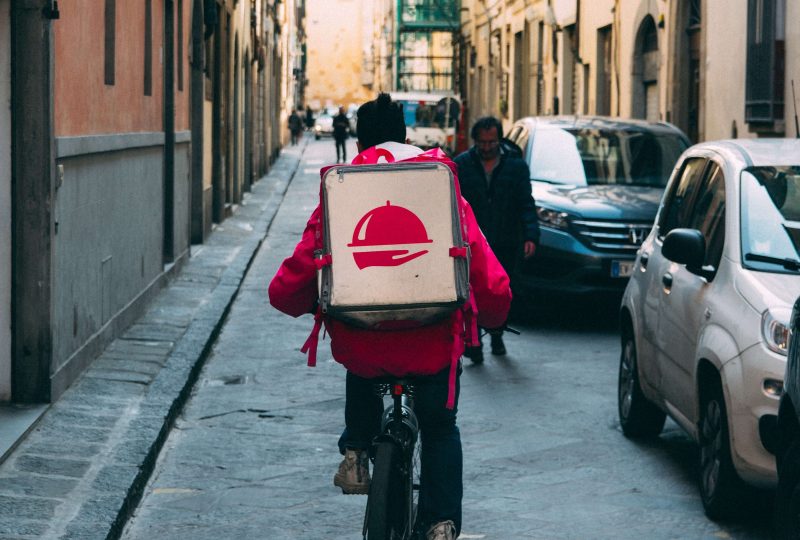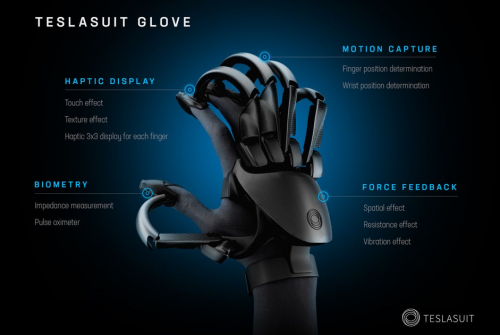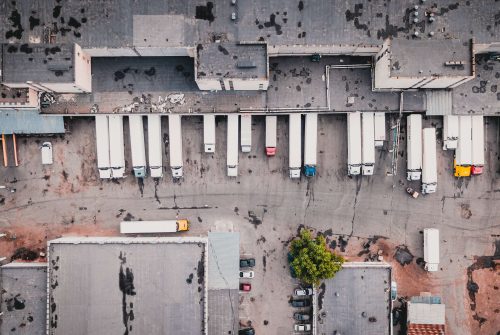Delivery automation is still far away
7 February 2019 | Written by Tommaso Spezzacatena
Many companies launched robots for food or other goods deliveries within our cities. However, the path is still long

As we know, the last mile delivery sector, meaning urban city delivery, is constantly expanding both in Italy and abroad (Amazon has now more than 100 million prime users).
Within this sector, many companies are convinced that automation will make the difference. Among these we can mention some giants such as Piaggio with its GITA, Amazon, Pepsi and Segway with Loomo, presented at Ces 2019 in Las Vegas.
Drone or robot, flying or terrestrial is indifferent: the important thing is that it is UV, Unmanned vehicle, i.e. an autonomous and automated vehicle.
But is it really the most convenient solution? In the short term certainly not.
The couriers on bicycles (the riders of Foodora or Glovo, to name some of the biggest delivery brands) in fact today are much cheaper, and will still be for several years.
R&S – research and study
Let’s start from the fact that the research to obtain an innovative product such as a robot equipped with artificial intelligence able to move in the city traffic is very expensive. For example, according to a report from the FactSet study center, Amazon in 2017 has spent a good $23 billion in R&S resulting in one of the companies that spends the most in the world in this field. Surely the entire budget was not intended for delivery automation (in fact a good slice went to Alexa) but we all know the interest of Amazon, at least in theory, in the implementation of a drone delivery system.
On the other hand, however, the use of a rider has no initial implementation costs (artificial intelligence is already included).
Hardware
Then you have to consider the hardware. To give an example, the Aibotix X6 V2, a drone with a range of 30 minutes and able to lift a load of 3kg (features comparable to those of a drone for urban deliveries) costs about 30,000 euros, including a camera. A very important cost for modest performances in terms of load lifting. Furthermore, we know that drones today are very delicate in case of collisions.
A robot, on the other hand, is certainly more robust, but the state of the art is still far behind and the costs are still too high, especially because of the difficulty of realizing a reliable artificial intelligence, to think of applying it systematically.
As for riders, a bike costs about 50/80€ and is still paid by the worker, as well as any repairs and damage to the vehicle.
Legal aspect
On a legal level, drones and robots do not yet have the go-ahead to proceed with freight transport.
As for land vehicles, however, there are no specific laws, and usually only permits are allowed to carry out tests and assessments.
However, there are some exceptions regarding drones: for example, in China, commercial delivery flights are already active and authorized (see the case of JD.com). In the US, the Department of Transportation suggests that drones used by civilians can hover and fly over the crowds and in some cases even at night. Then there is the European case: The Drones Open Category Regulation is about to be published, which will liberalize the use of drones for non-hazardous activities (based on vehicle weight), while for deliveries or professional purposes it is necessary to ask for authorization to proceed analyzed from time to time.
On the other hand, humans do not have problems operating.
Insurance
Another problem arises at an insurance level. In the case of use of highly technological and automated vehicles, the companies will certainly equip themselves with various insurances, both in the case of damage caused to the vehicle (i.e. vandalism as in the case of free-flow bike sharing, without stations) is not to be excluded. both for damage that the vehicle can cause to passersby and things.
This problem obviously does not arise if companies decide to rely on a human deliveryman.
In fact, riders are not provided with insurance that covers illnesses or injuries and, in case of collisions with people or things, responsibility (another controversial issue for drones and robots) is on the worker and not the platform.
The recharge
There remains the big problem of recharging, especially for terrestrial robots, because even if the autonomy of drones is lower, however, these can cover a greater distance in less time. For example, assuming an average speed (optimistic) of 20 km/h, to cover 5km (a distance that some Bolognese riders said they sometimes have to travel in one trip) we will have a round trip time of about 30min, which requires batteries of a certain level and a certain size. If one considers that this would be only one of many trips, one might wonder if a land rover is able to resist an evening of deliveries.
The delivery man obviously has no recharging problems.
Roads
Remaining focused on the functioning of autonomously guided robots, one cannot help but consider that these are often thought of and implemented in America or in any case not in Europe, where urban planning and flooring are completely different.
One might ask if a rover is able to make deliveries in an area with cobblestones, holes or steep slopes, etc. etc.
Again, the riders have a lot less problems related to paving and slopes.
The cost
To date, a rider is paid about €4 per delivery, this means that the robotic systems will have to guarantee a maximum price equal to this in order to be competitive, which is not obvious. Again, at the cost level with robots, fixed management costs (recharging energy and repair costs) would arise, which today platforms do not have.
Unfortunately, then it seems that in this case the technology is still far from solving a precarious work situation like that of the couriers with bicycles.








